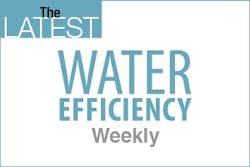At Water Efficiency magazine, we are concerned not only with the efficient transportation and use of water, but also with water-quality issues. In other words, we try to present a holistic view of water resource management from sources to users.
Earlier this year, we ran a three-part series on solving Water Quality Index (WQI) calculations by Harbans Lal. In the articles, the unusual suspects of mercury, arsenic, total phosphorus, etc. are discussed. That article discusses WQI with a national view. Each state and municipality will have its own standards.
In California’s Central Valley, uranium-laden sediment is washed down from the Sierra Nevada mountains to reservoirs where it’s stored and then distributed to farmers year-round. Now before we sound the alarm, it’s important to note that the uranium is naturally occurring and not a by-product of pesticides or agricultural methods directly; according to US Geological Survey researchers, the irrigated plants create a weak acid that leaches more uranium from the sediment which then filters into the aquifer.
According to this AP story:
Groundwater pumping pulls the contaminated water down into the earth, where it is tapped by wells that supply drinking water. California is now experiencing its driest four-year span on record, and farmers and other users are pumping groundwater at the highest rates ever, pulling yet more uranium into wells.
One thing is for sure. It’s becoming a big issue, and California has spent at least $16.7 million dollars helping public water systems deal with uranium contamination.
Previous discussions focused on agricultural runoff have focused on nitrogen and nutrient runoff from fertilizing programs.
So the US Geological Survey reports linking farming activity to the naturally occurring uranium leaching into municipal water supplies and private wells. Is this just fear mongering and part of a publicity campaign against big agriculture and farming? Or, is this a minor issue that will go away as aquifers naturally refill (we hope) in this El Nino year? Should we just continue to find ways to address the contaminants as they show up? Or, create more robust testing systems to ensure public health from private and public wells?
We’d love to hear your thoughts on the subject in the comments below!
